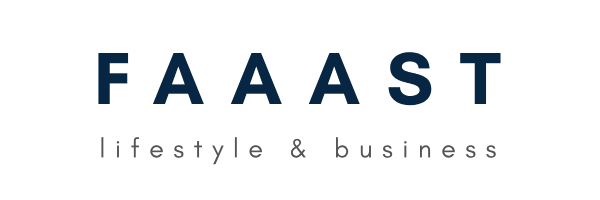Homeownership Guide: Steps to Buy Your First House

Buying your first home ownership is a big milestone, representing financial independence and personal achievement. While exciting, the process of purchasing a home can be complex and overwhelming, especially for first-time buyers. In this guide, we will walk you through the essential steps to make the home-buying process smoother and less stressful.
Steps to Buy Your First Home:
- Determine Your Budget
- Understand how much you can afford by factoring in income, monthly expenses, and debts.
- Get pre-approved for a mortgage to narrow down your price range.
- Save for a Down Payment
- Set aside a portion of your income specifically for your down payment.
- Aim for at least 20% of the home’s price, though some loans require less.
- Research Neighborhoods
- Think about the location, amenities, schools, and commuting distance.
- Investigate future developments in the area.
- Find a Real Estate Agent
- Choose a trustworthy, experienced agent who understands your needs.
- An agent can help negotiate prices and handle paperwork.
- Get Pre-Approved for a Mortgage
- Meet with lenders to discuss loan options and get pre-approved for financing.
- This will make you a more competitive buyer.
- Start House Hunting
- Visit properties in your price range.
- Make a checklist of must-haves and nice-to-haves.
- Make an Offer
- Once you find your dream home, work with your agent to make a competitive offer.
- Be prepared for negotiations.
- Home Inspection
- Hire an inspector to evaluate the home’s condition and identify potential issues.
- This step is crucial before finalizing the purchase.
- Close the Deal
- Sign the necessary documents and finalize your mortgage.
- Pay closing costs and transfer ownership.
- Move Into Your New Home
- Pack up your belongings and enjoy settling into your new space!
Understanding Your Financial Status: The Foundation of Homeownership
Before embarking on the journey to purchase your first home ownership, it is crucial to assess your financial health. Here are some key steps to help you evaluate your financial status:
Steps to Assess Your Financial Health:
- Review Your Credit Score
- Your credit score plays a significant role in determining your mortgage options and interest rates.
- A higher score often results in better loan terms, so aim to improve it if necessary before applying.
- Evaluate Outstanding Debts
- Calculate your existing debts, including credit cards, student loans, or car loans.
- Lenders typically assess your debt-to-income ratio to ensure you can manage additional monthly mortgage payments.
- Examine Savings for Down Payment
- Save for a down payment, usually around 20% of the home’s purchase price.
- Having a larger down payment can help you secure better mortgage terms and reduce private mortgage insurance (PMI) costs.
- Create a Budget
- Account for closing costs, which can range from 2% to 5% of the purchase price.
- Factor in monthly mortgage payments, property taxes, homeowners insurance, and future home maintenance costs.
- Understand Mortgage Types and Terms
- Explore different mortgage options such as fixed-rate, adjustable-rate, and government-backed loans.
- Compare interest rates, loan durations, and payment plans to find the best fit for your financial situation.
- Consult a Financial Advisor or Mortgage Broker
- A professional can help you navigate the mortgage process, offer advice on improving your credit score, and recommend suitable loan products.
Key Financial Factors to Consider:
| Factor | Details |
|---|---|
| Credit Score | Affects mortgage rates and loan eligibility |
| Outstanding Debts | Lenders use this to calculate your debt-to-income ratio |
| Down Payment | Aim for 20% or more to avoid PMI and secure better rates |
| Monthly Budget | Ensure your mortgage fits your monthly expenses |
| Closing Costs | Typically 2%-5% of the home price |
| Mortgage Types | Fixed-rate, adjustable-rate, government loans |
| Other Expenses | Property taxes, homeowners insurance, maintenance |
By taking the time to assess your financial health and prepare thoroughly, you will be better equipped to make informed decisions and successfully navigate the home-buying process. This preparation ensures that you can confidently pursue first home ownership while staying within your financial means.
Selecting the Right Mortgage Plan: Fixed, Adjustable or Interest-Only
One of the crucial decisions to make when buying your first home ownership is selecting the right mortgage plan. There are several options to choose from, each with its own set of advantages and considerations. Below, we’ll break down the most common types of mortgages to help you make an informed choice.
Types of Mortgages:
- Fixed-Rate Mortgages
- How it works: The interest rate remains constant throughout the life of the loan.
- Pros:
- Predictable monthly payments.
- Protection against future interest rate hikes.
- Ideal for those who plan to stay in the home long-term.
- Cons:
- Typically higher initial interest rates compared to adjustable-rate loans.
- Less flexibility if interest rates drop after locking in.
- Adjustable-Rate Mortgages (ARMs)
- How it works: The interest rate is fixed for an initial period (e.g., 5, 7, or 10 years) and then adjusts periodically based on market rates.
- Pros:
- Often offers lower initial interest rates than fixed-rate mortgages.
- Ideal for homeowners who plan to sell or refinance before the adjustable period begins.
- Cons:
- Risk of higher monthly payments once the adjustable period begins.
- Uncertainty if market rates rise significantly during the loan term.
- Interest-Only Mortgages
- How it works: You pay only the interest on the loan for a set period (usually 5-10 years), after which you start paying both principal and interest.
- Pros:
- Lower initial monthly payments during the interest-only period.
- Beneficial for those with fluctuating incomes or who want to maximize cash flow early in homeownership.
- Cons:
- Higher payments after the interest-only period ends.
- No equity is built up during the interest-only phase.
- Risk of being “underwater” if the home’s value doesn’t increase.
Mortgage Comparison Table:
| Mortgage Type | Initial Rate | Monthly Payments | Best For | Risks |
|---|---|---|---|---|
| Fixed-Rate Mortgage | Higher | Stable, predictable | Long-term homeowners seeking stability | Higher initial interest rates |
| Adjustable-Rate Mortgage | Lower | Variable (initially) | Homeowners planning to sell or refinance | Potential for rate increases |
| Interest-Only Mortgage | Typically lower | Interest-only initially | Those with fluctuating income or short-term plans | No equity buildup during initial period, higher payments later |
Key Considerations:
- Stability vs. Flexibility: Fixed-rate mortgages offer stability, but ARMs might be more appealing if you expect to move or refinance within a few years.
- Short-term vs. Long-term Goals: Interest-only mortgages may help in the short-term but can lead to financial strain once the principal payments kick in.
- Market Conditions: Consider current and projected market interest rates, as ARMs may be less favorable when rates are rising.
By understanding the pros and cons of each mortgage type, you can select the one that aligns best with your financial goals and first home ownership plans.
Searching for a Perfect Home: Location and Neighborhood Analysis
When buying your first home ownership, one of the most important factors to consider is the location and neighbourhood. The right location can greatly influence your quality of life, the long-term value of your home, and your overall satisfaction with your living situation. Here’s how to evaluate the area where you plan to buy:
Key Factors to Consider When Choosing a Location:
- Proximity to Amenities
- Schools: If you have children or plan to, the quality and proximity of schools can significantly impact your decision.
- Shopping Centres & Grocery Stores: Look for areas with easy access to daily necessities like grocery stores, pharmacies, and shopping centres.
- Public Transport: If you rely on public transportation, consider the proximity to bus stops, subway stations, or train lines.
- Parks and Recreation: Access to parks and recreational areas can be essential for outdoor activities and enhancing your lifestyle.
- Safety and Crime Rates
- Crime Statistics: Research the crime rates of the neighbourhood to ensure it’s a safe environment. Websites and local police stations often provide crime reports and statistics.
- Local Perceptions of Safety: Ask current residents about their experiences or take a walk around the area at different times of the day to gauge safety.
- Traffic and Noise Levels
- Noise Levels: Consider the noise level of the area—are you near a busy road or train tracks? High noise can be disruptive, especially in residential areas.
- Traffic Flow: Look at traffic congestion and parking availability. Long commute times or difficulty finding parking can detract from your experience in the area.
- Community and Neighbourhood Vibe
- Community Engagement: Is the area active with community events, local meetings, and neighborhood groups? A strong community connection can make the area more welcoming.
- Cultural Fit: Ensure the vibe of the neighbourhood fits with your lifestyle. Do you prefer a quiet suburban street or an active, urban environment?
- Future Development
- Upcoming Projects: Investigate any planned developments in the area that could affect your home’s value or living experience. New schools, parks, or transportation options can increase property values, while construction projects might cause temporary disruption.
Location and Neighbourhood Checklist:
| Factor | Considerations | What to Look For |
|---|---|---|
| Proximity to Amenities | Schools, shopping centres, grocery stores, parks | Easy access to essential services and leisure activities |
| Safety and Crime Rates | Local crime reports and safety statistics | Low crime rates, secure environment |
| Traffic and Noise Levels | Traffic congestion, noise from roads or trains | Quiet, easy access without traffic jams |
| Community and Vibe | Local engagement, atmosphere of the neighbourhood | Friendly, supportive, and comfortable environment |
| Future Development | Planned developments or infrastructure changes | Positive developments that enhance living conditions |
Final Considerations:
- Take a Test Drive: Visit the area multiple times during different times of day to understand how the neighbourhood feels. Pay attention to the noise, traffic, and overall vibe of the community.
- Speak to Locals: If possible, talk to people who live in the neighbourhood to get their perspective on the area.
By thoroughly researching the location and neighborhood of your potential first home, you’ll ensure that the area complements your lifestyle, making your home-buying decision a sound investment for years to come.
Negotiating and Making An Offer: Get the Best Deal Possible
Once you have found the perfect property for your first home ownership, the next step is to negotiate and make an offer. This process is essential for securing the best possible deal on your home. Here are some key strategies to help you navigate the negotiation phase effectively:
Key Steps for Making an Offer:
- Research Market Value:
- Compare Similar Homes: Look at the prices of similar properties in the area to get an idea of the market value. Websites like Zillow or Redfin can help with this.
- Understand the Local Market: Is it a buyer’s or seller’s market? In a seller’s market, you may need to offer closer to the asking price, while in a buyer’s market, there may be room for negotiation.
- Evaluate the Property’s Condition:
- Consider Necessary Repairs: Factor in the cost of any repairs or upgrades the home may need. A property in need of significant repairs may justify a lower offer.
- Time on the Market: If the property has been on the market for a while, the seller might be more willing to negotiate on price.
- Negotiate the Offer:
- Start Low, but Fair: Begin with a price that’s lower than your maximum offer, giving room to negotiate upward if necessary. Be realistic based on your research and budget.
- Know Your Limits: Be clear about the maximum amount you’re willing to pay, and stick to it. Don’t let emotions drive the negotiation for first home ownership.
- Use Your Agent: Your real estate agent will be a valuable asset during the negotiation process. They can help you with strategy and provide insight into what’s reasonable.
- Include Contingencies:
- Home Inspection Contingency: This allows you to back out of the deal if significant issues are discovered during the inspection.
- Financing Contingency: This protects you if your mortgage is not approved.
- Appraisal Contingency: Ensures that the home appraises for at least the purchase price. If it doesn’t, you can renegotiate or back out of the deal.
- Be Prepared to Compromise:
- Negotiation is a Give-and-Take: Be willing to make concessions in areas that are less important to you, such as minor repairs or closing costs, to keep the deal moving.
- Know What’s Non-Negotiable: Stay firm on critical aspects like the overall price or essential repairs, but be flexible on other less important points.
Negotiation Checklist for first home ownership:
| Factor | Considerations | What to Look For |
|---|---|---|
| Market Value | Compare similar homes and research local prices | A fair price based on comparable properties |
| Property Condition | Consider needed repairs or upgrades | Factor in repair costs for price negotiations |
| Starting Offer | Make an initial offer below your max budget | Room for negotiation while staying within your budget |
| Contingencies | Home inspection, financing, and appraisal clauses | Protect yourself from unforeseen issues |
| Negotiation Strategy | Know your limits and be ready to compromise | Stay firm on your priorities, flexible on non-essential areas |
Closing Process of A Home Purchase: What to Expect at Settlement
The closing process of a home purchase, also known as settlement, is the final step in buying a house. During this phase, the buyer and seller sign all the necessary paperwork to transfer ownership of the property. At the settlement, the buyer will typically pay the remaining balance of the purchase price and any closing costs.
Additionally, the title company will ensure that all liens and encumbrances on the property are cleared before transferring the title to the buyer. After all documents are signed and funds are exchanged, the keys to the new home are handed over to the buyer, marking the official completion of the home purchase.
Summary Table for first home ownership
| Step | Description | Estimated Timeframe |
|---|---|---|
| Determine Budget | Analyze your finances to set a spending limit | 1 week |
| Save for Down Payment | Save a portion of your income for the deposit | 6 months – 2 years |
| Research Neighborhoods | Explore various areas based on your preferences | 1-2 weeks |
| Find Real Estate Agent | Choose an agent to guide you through the process | 1 week |
| Get Pre-Approved for a Mortgage | Meet with lenders to secure financing | 1 week |
| House Hunting | Visit homes that fit your criteria | 1-3 months |
| Make an Offer | Submit a competitive offer on a property | 1 week |
| Home Inspection | Hire a professional to inspect the property | 1 week |
| Close the Deal | Finalize the mortgage and sign contracts | 1-2 weeks |
| Move In | Transition into your new home | 1-2 weeks after closing |
By following these steps, you will be well on your way to achieving first home ownership. Start with careful planning, and make informed decisions along the way for a smoother home-buying experience!











